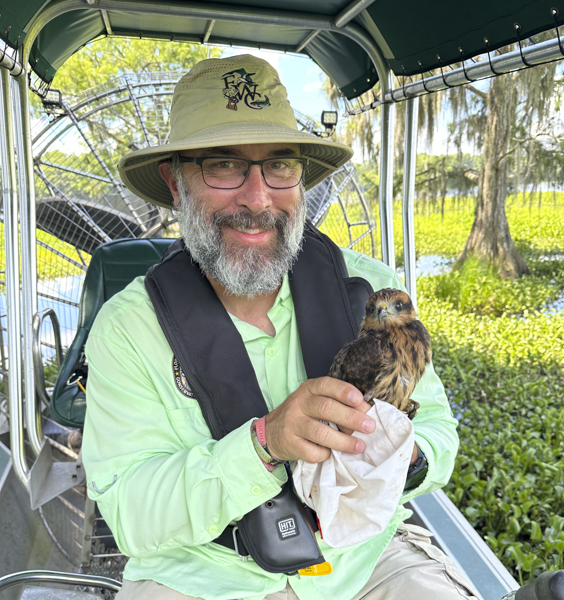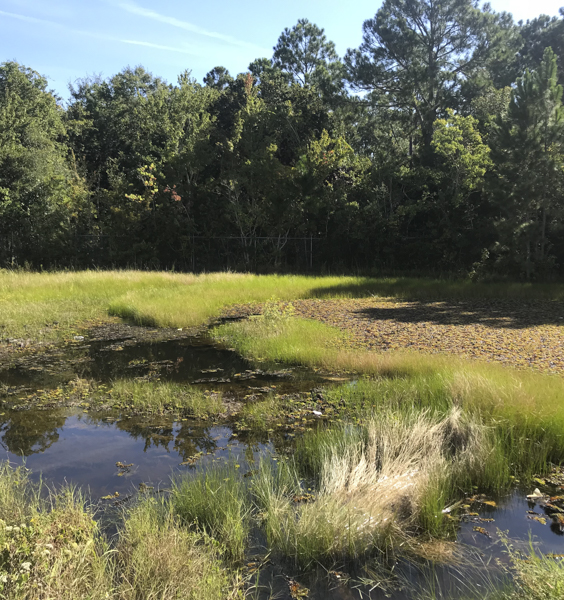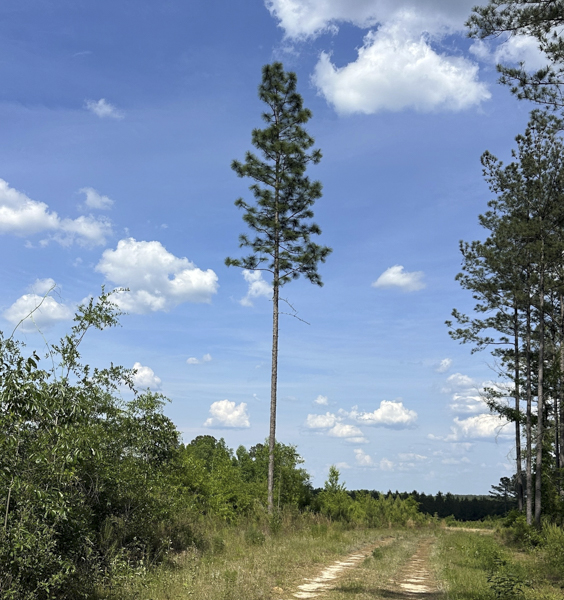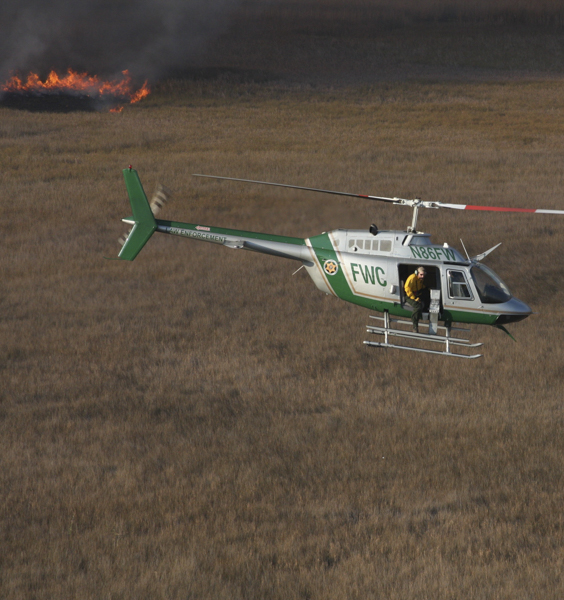Our People




Derek Fussell – Alumni Spotlight
Where are you now and what are you doing?
This past May I celebrated my 20th year with the Florida Fish and Wildlife Conservation Commission (FWC). I am a Wildlife and Fisheries Biological Scientist III for the FWC serving as the Invasive Plant Management Sections Regional Biologist for the Northwest Region (Panhandle) of Florida. Starting in 2005 after leaving South Georgia, I moved back home to Panama City, FL as a Biologist II with FWC on the 86,000-acre Apalachicola River Wildlife and Environmental Area. I now manage 56 waterbodies across the 16 counties in the Panhandle totaling over 100,000 acres for diverse native aquatic species while looking to control or eradicate invasive exotic species. In addition to managing the State aquatic resources for invasive plant species, I handle permitting of aquatic plant removal by private citizens, inspections for triploid grass carp permits, and extension/outreach visits on private waterbodies. Away from work I founded and operate a 501c(3) non-profit organization (Camo Dreams, Inc.) that provides dream outdoor hunting and fishing trips across the country for children that have disabilities and or terminal illnesses.
What is one way your work is having a positive impact on natural resources and conservation?
Invasive aquatic plant species often outcompete native aquatic vegetation, disrupting ecosystems and limiting access to water bodies for fish, wildlife, and people who rely on them for hunting, fishing, and recreation. By surveying all 56 of my water bodies each year, I’m able to develop effective budgets and management plans to control invasive species using contractors – all while ensuring the protection and sustainability of our natural resources.
One example of the challenges we face involves two particularly aggressive aquatic weeds: Salvinia molesta and Azolla pinata, both found in the Panhandle. Under ideal conditions, these plants can double their growth every three days. Without proper management, they can render water bodies unusable for both public recreation and wildlife. These species fall under our Early Detection Rapid Response (EDRR) program, which we address on a weekly basis to eradicate or maintain their presence at the lowest possible levels.
I am proud to be on the front lines of protecting our aquatic ecosystems from these and many other invasive species, ensuring that our natural resources remain healthy and accessible for future generations.
How did your time at Ichauway help prepare you for your current job or career?
My time at Ichauway helped teach me how to work independently as well as with a team. Much of my FWC work time is spent alone covering thousands of miles on the road and thousands of acres of water. But I also have a Regional Aquatics Team that unites several different sections of FWC (Aquatic Habitat Restoration, Freshwater Fisheries, Fish & Wildlife Research, and Waterfowl Management) to work together to benefit aquatic habitat management. The projects I worked on in the Landscape Ecology Lab at Ichauway were incredibly diverse. They ranged from monitoring vegetation recovery after the flood of ’94 and mark recapture of gopher tortoises, to dendrochronology bands on pines in ephemeral wetlands, and measuring pocket gopher mounds and distribution. During my time there, we hosted seven different graduate students and numerous summer students working on various projects and data collection. That experience taught me valuable skills in managing time, people, and resources – both in the field and in the lab.
What is one fond memory you have of your time at Ichauway?
There are so many I could probably write a short book! Probably my favorite was the annual Fourth of July BBQ and softball game where the entire staff got together to enjoy great food and fellowship. One that will forever be burned into my memory is the Olympic torch being carried through Ichauway by staff on its way to the 1996 Atlanta Olympics and watching Mr. Joseph W. Jones carry it in a mule-drawn wagon across the bridge and up to the ballfield. I got a poster that night and each staff member that carried the torch along with Mr. Jones signed it for me. It is framed on the wall of my Coca Cola themed home office.
Derek Fussell

Where are you now and what are you doing?
This past May I celebrated my 20th year with the Florida Fish and Wildlife Conservation Commission (FWC). I am a Wildlife and Fisheries Biological Scientist III for the FWC serving as the Invasive Plant Management Sections Regional Biologist for the Northwest Region (Panhandle) of Florida. Starting in 2005 after leaving South Georgia, I moved back home to Panama City, FL as a Biologist II with FWC on the 86,000-acre Apalachicola River Wildlife and Environmental Area. I now manage 56 waterbodies across the 16 counties in the Panhandle totaling over 100,000 acres for diverse native aquatic species while looking to control or eradicate invasive exotic species. In addition to managing the State aquatic resources for invasive plant species, I handle permitting of aquatic plant removal by private citizens, inspections for triploid grass carp permits, and extension/outreach visits on private waterbodies. Away from work I founded and operate a 501c(3) non-profit organization (Camo Dreams, Inc.) that provides dream outdoor hunting and fishing trips across the country for children that have disabilities and or terminal illnesses.
What is one way your work is having a positive impact on natural resources and conservation?
Invasive aquatic plant species often outcompete native aquatic vegetation, disrupting ecosystems and limiting access to water bodies for fish, wildlife, and people who rely on them for hunting, fishing, and recreation. By surveying all 56 of my water bodies each year, I’m able to develop effective budgets and management plans to control invasive species using contractors – all while ensuring the protection and sustainability of our natural resources.
One example of the challenges we face involves two particularly aggressive aquatic weeds: Salvinia molesta and Azolla pinata, both found in the Panhandle. Under ideal conditions, these plants can double their growth every three days. Without proper management, they can render water bodies unusable for both public recreation and wildlife. These species fall under our Early Detection Rapid Response (EDRR) program, which we address on a weekly basis to eradicate or maintain their presence at the lowest possible levels.
I am proud to be on the front lines of protecting our aquatic ecosystems from these and many other invasive species, ensuring that our natural resources remain healthy and accessible for future generations.

How did your time at Ichauway help prepare you for your current job or career?
My time at Ichauway helped teach me how to work independently as well as with a team. Much of my FWC work time is spent alone covering thousands of miles on the road and thousands of acres of water. But I also have a Regional Aquatics Team that unites several different sections of FWC (Aquatic Habitat Restoration, Freshwater Fisheries, Fish & Wildlife Research, and Waterfowl Management) to work together to benefit aquatic habitat management. The projects I worked on in the Landscape Ecology Lab at Ichauway were incredibly diverse. They ranged from monitoring vegetation recovery after the flood of ’94 and mark recapture of gopher tortoises, to dendrochronology bands on pines in ephemeral wetlands, and measuring pocket gopher mounds and distribution. During my time there, we hosted seven different graduate students and numerous summer students working on various projects and data collection. That experience taught me valuable skills in managing time, people, and resources – both in the field and in the lab.
What is one fond memory you have of your time at Ichauway?
There are so many I could probably write a short book! Probably my favorite was the annual Fourth of July BBQ and softball game where the entire staff got together to enjoy great food and fellowship. One that will forever be burned into my memory is the Olympic torch being carried through Ichauway by staff on its way to the 1996 Atlanta Olympics and watching Mr. Joseph W. Jones carry it in a mule-drawn wagon across the bridge and up to the ballfield. I got a poster that night and each staff member that carried the torch along with Mr. Jones signed it for me. It is framed on the wall of my Coca Cola themed home office.
